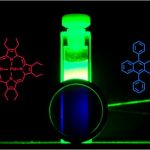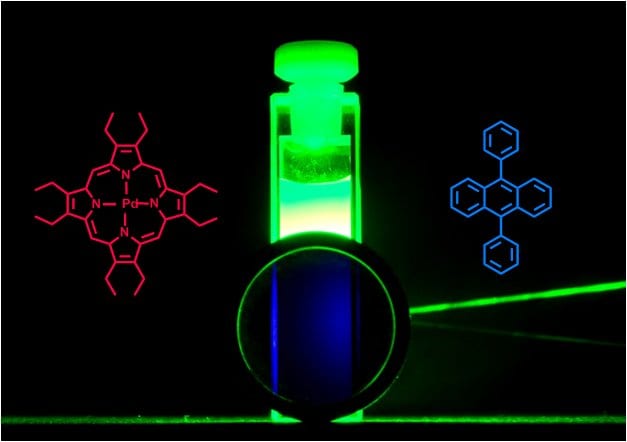The design of new materials capable of transducing various energy types into useful signals is one of the most exciting tasks for materials chemists. Systems that modulate light either by down- (Stokes shift) or up-conversion (anti-Stokes shift) without any additional energy are very useful tools. In particular, light-upconverting materials bear numerous promises in fields as va ried as solar harvesting and bioimaging.
ried as solar harvesting and bioimaging.
From an application standpoint, methods working with low-power, non-coherent sources are all the more interesting as they do not necessitate the use of high-energy lasers and can work under ambient light conditions. Several avenues have been developed over the past decade to optimize and extend the range of operation of low-power sensitized upconversion schemes in solution. In recent years, efforts to transpose these advances into solid matrices have also been pursued.
The group of Simon and Weder (Adolphe Merkle Institute, Fribourg, Switzerland) reports now the synthesis and characterization of polymeric nanoparticles capable of low-power sensitized upconversion. In this work, the upconverting pair is infused into rubbery cross-linked nanoparticles synthesized by surfactant-free emulsion polymerization. The researchers observe upconversion only in dyed particles containing both a metal-containing sensitizer and a polyaromatic hydrocarbon emitter. Moreover, upconverted light is observed in particle suspensions but also in dried particle films.
This strategy may pave the way for the design of more complex upconverting nanoparticles which could be used in bioimaging or drug delivery systems. Furthermore, the ability to generate upconverting films from latex suspensions presages the use of such systems in smart paints and other light modulating coatings.

















